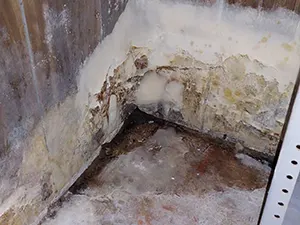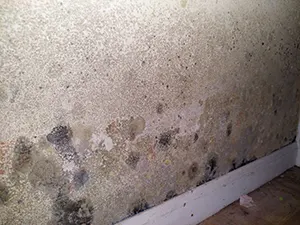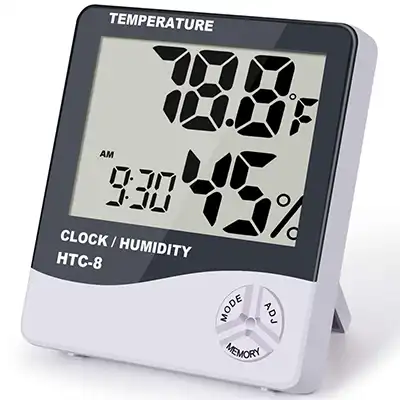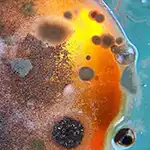Mold Testing & Mold Inspection
Straight answers about mold and mold testing.
Mold is everywhere, but is your home making you sick?
I was in a basement earlier this week that had more toxic mold than I’d seen all year.
The home had been closed up for 12 months, the power turned off, and the previous owner was a bonafide hoarder (each one of these is a red flag).
As soon as I sized up the situation, I modified the inspection and cut it short. I don’t like doing that, but sometimes the problem is bigger than the home inspection.
Thank goodness the new buyers are getting a great deal and have the finances (and good sense) not to move in until all the work is done (including the pool). Check it out these photos…




This shows what happens when a home that is made of paper and wood gets neglected and why it’s so important to keep it dry.
Because mold is everywhere (just like Radon gas) and helps keeps our forests running like clockwork.
But as you already know, mold is unhealthy inside our homes the healthier the home is, the less likely you’ll be stricken by the deadly consequence of those dank, dark spores.
These spores create toxins, allergens, irritants, and allergic reactions in (mainly sensitive) people.
It comes in many colors (from white to black) and can only exist in dark, damp conditions (most molds are black so black-colored mold is not always Stachybotrys).
So if you think your home is making you sick, mold testing should be one of the first steps you take toward getting better.
What Are Mold Symptoms Like?
Allergic reactions to mold are common and can hit you fast or slow.
Common symptoms include:
- Sneezing
- Bloodshot eyes
- Skin rash
- Runny nose
- Lung, nose, and throat problems
- Even asthma attacks


When Should I Test for Mold?
There are 3 situations when mold testing would be a good idea.
- When you’re living in the home and experience mold-like symptoms, but can’t pinpoint the cause. Test for mold to make sure your symptoms are caused by mold and not something else.
- After you’ve completed a mold remediation and cleanup and want to make sure the mold is gone and it’s safe to run your HVAC system.
- You’re buying a home that smells damp and musty, but you don’t see any mold. It may be growing above ceilings, behind the walls, or under flooring.
Should I Test For Mold Every time I Buy A House?
No. You don’t need to test for mold without a reason. If there is mold present, you just need to fix the source and repair the damage.
Plus, mold testing is relatively expensive (about $600 on average).
An experienced home inspector will do enough sniffing around to tell you if they think you have a problem and will discuss the best steps to take if you do.


How do I get rid of mold in my home?
Your home will never be 100% mold-free. It’s everywhere. The key is to control it by creating conditions where it can’t grow, which means controlling the moisture in your home.
If the home already has mold, you can’t just remove the damaged area or clean the mold. You’ll need to fix the water problem and then fix the damage.
And you have to act fast. Mold is ferocious, especially behind walls, inside ceilings, and under floors. The longer is goes unchecked the more damage it will do. Ceiling tiles, wood, and carpet may have to be thrown away if left alone too long.
Can I Just Clean The Mold And Call It Good?
If it’s small enough, yes. The general guideline is an area less than 3’x3′.
If the area is larger than 10 sq.ft., caused by a sewage backup, or you have mold in your HVAC system you’ll want to call a professional mold remediation company or air duct cleaning company to use the proper equipment and take the necessary precautions to do it right the first time and keep your family safe.
DO NOT run your HVAC system if you have mold in your home. You run the risk of spreading it everywhere.
If you still want to clean the area yourself:
- Make sure you first fix the source. Cleaning the mold without fixing the problem will only let the mold come back.
- Wear an N-95 respirator if there are spores in the air (they’re about $12 at the hardware store). You might also want to consider gloves and goggles.
- Dry all affected areas completely. If the problem is in a finished area, remove the bottom row of drywall and use box fans and dehumidifiers to remove all the moisture in the room and inside the walls.
- Use detergent and water to clean solid surfaces.
- Don’t paint over moldy surfaces (this won’t help and the paint will probably peel later).



How Do I Know If All the Mold Is Gone?
A good, safe bet is when the moisture source is gone, the damage is repaired, and people no longer complain of symptoms.
If you don’t want to wait that long or take the risk, you can perform a mold test.
How Do I Keep Mold Away?
It’s all about moisture control.
- Clean up leaks and spills and dry them quickly
- Keep gutters sealed and clean
- Make sure the ground slopes away from the foundation
- Keep the humidity level in the home between 30%-50%. You can do this by making sure your air conditioner is running regularly (along with cooling the home, it also removes humidity). Condensation on windows, walls, and pipes is a sign it’s probably too high
- Keep your dryer vent clean and vented outside
- Use the bathroom fan or keep the window open when taking a shower


So how much does mold testing cost?
Most Certified Industrial Hygienists charge a flat fee ranging from $300-$900. The biggest factors in the cost are the size of the home and number of samples.
In Kansas City, expect to invest about $500 for a 2,500 sq.ft. home.
30 Min. DIY Home Inspection Checklist – Only $18.99
Check the Bones YOURSELF While You Tour the Home.
This straightforward field guide is based on our Major-Items Inspection and focuses ONLY on the bones. It shows you:
- WHERE to look
- WHAT to look for
- WHAT it means
All in the time it takes to tour the home.
Let us help you decide if the home has good bones or is just a money pit in disguise – BEFORE you make an offer and BEFORE you order your home inspection.


Created by a Certified Master Inspector™
13 Pages Fully Illustrated
Immediate PDF delivery + flipbook
Save time and hundreds – sometimes thousands – in wasted home inspection fees.
All in about 30 minutes
Use it over and over
Find out for yourself if there are major issues hiding in plain sight BEFORE the home inspection.











